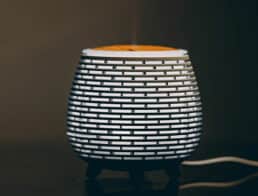Do you dread bathing your dog? You’re certainly not alone. It’s a task that many dog owners, as well as their dogs, would rather avoid. However, baths can help maintain your dog’s health, so it is important to bathe them when they’re due for a good cleaning.1
One of the reasons doggie bathtimes can feel like such a chore is the post-bath drying process. Trying to get your dog dry after a bath sometimes seems like an impossible task. If this sounds familiar, it may be time to try another method of drying your dog.
In this article, we will go over the three main methods of drying your dog after a bath and their pros and cons to help you find the one that best suits you and your dog.
1. Air Drying

Photo courtesy: Pixabay Public Domain
As the name suggests, air drying involves your dog naturally drying off after their bath. The idea is to simply let your dog roam free and let the elements (and usually a few good shakes) work their magic!
Many dog owners are drawn to this method because it’s straightforward and doesn’t require any additional tools. Another reason owners may choose air drying is they have found that towel drying aggravates their dogs.
While air drying can work, I generally advise against it for a number of reasons. Air drying can take a long time and prolonged dampness can lead to skin and ear infections and matted fur.2 These problems are more likely to occur in long-haired or thick-coated dog breeds, so air drying is best suited for dogs with short, thin fur. This method can also cause your dog discomfort, particularly if it’s cool out.
And let’s not forget about the possible mess and odors you may need to deal with. We all know that wet dogs don’t have a very pleasant smell (even when they’re clean!)… so just imagine that odor being transferred to your home and furnishings. Plus, a wet dog resting or rubbing up against certain types of materials may cause water damage to your furniture, walls, and floors. In short, while this method may be easy, it has significant drawbacks.
2. Towel Drying

Photo courtesy: Flickr
One of the most popular methods of drying your dog after a bath is to use a towel. But before you reach for the nearest rag and start rubbing your dog down, there are a couple of tips to keep in mind.
First, for best results, consider using a microfiber towel. Not only are microfiber towels highly absorbent, but they also tend to be softer and gentler to the touch than regular towels. Of course, a regular towel will also do the trick, but it will take more time and effort to get your dog dry after a bath.
Second, it’s important to use proper technique when towel drying your dog. Instead of a rough scrubbing motion, use a massage-like rubbing motion, starting at their head and working your way back and then down. If you want to see what this process looks like in action, give this video a watch.
So why should you consider towel drying your dog? For starters, it’s relatively inexpensive to pick up a microfiber towel and in a pinch, you probably already have a few bath towels on hand you could use. It’s also easy to do once you get the hang of it. The downsides of this method are that it isn’t as effective as using a hairdryer, and dogs with sensitive skin, sore joints, or other concerns may find being towel-dried uncomfortable.
3. Using a Dog Hair Dryer

Photo courtesy: Pixabay Public Domain
The final method you may wish to try is using a dog hairdryer. Similar to blow-drying your own hair, this method involves blowing air through your dog’s coat to speed up the drying process.
However, unlike a regular hair dryer, dog hair dryers are specifically designed to make drying your dog’s coat as simple and safe as possible. While it may be tempting to use your regular hair dryer, keep in mind that the temperature of these dryers is usually too hot for dogs’ skin and fur. In addition, a well-designed dog hair dryer has many extra features that will speed up the process and reduce the stress associated with it.
This method is ideal for dogs with long or thick coats, and it is the most efficient and effective way to get your dog’s fur completely dry. Another great thing about a dog hair dryer is that you can use it in combination with the other two methods noted above. For example, you can choose to give your dog a quick towel dry and finish the job with a doggie hairdryer. Or, you can use the hairdryer to dry off most of the moisture from your dog and then let the rest air dry.
The main drawback of using a dog hairdryer is the price. Professional dog hair dryers can cost anywhere from one to a few hundred dollars. If you don’t want to spend that much, there are also some good budget options for under a hundred dollars. Another thing to be mindful of is that some dogs may find the sound upsetting. If your dog is sensitive to loud sounds, opt for a dog hair dryer that is designed to emit less noise.
Final Thoughts
Drying your dog may never be something you look forward to, but it doesn’t need to be a headache. If you’ve long relied on the same method of drying off your dog, give another technique a try. Good luck!
- The VIN Dermatology Consultants. Topical therapy for skin conditions in dogs and cats. Veterinarypartner.vin.com. Published November 8, 2016. Updated April 26, 2018. Accessed February 4, 2021.
- Golden D. Hot spots – ‘Tis the season. Ahna.net. Published March 30, 2020. Accessed February 4, 2021.














